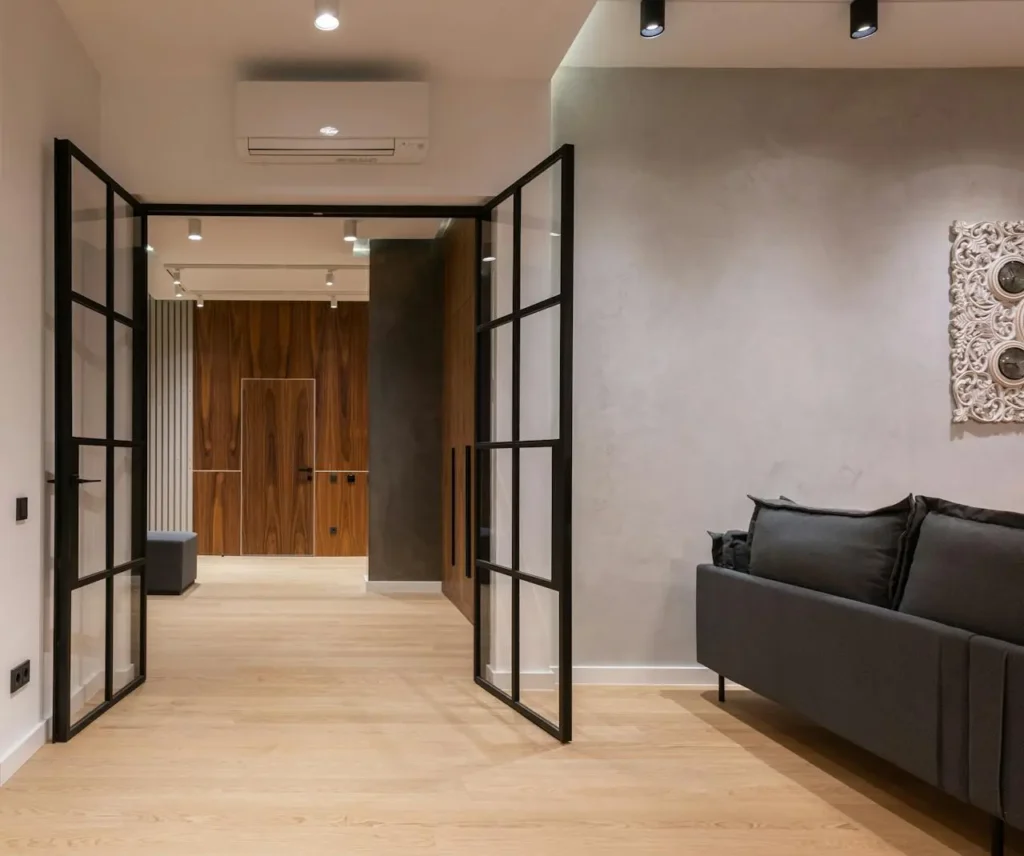Doors play a fundamental role in shaping the structure and functionality of any space. Whether you’re renovating, designing, or just curious, knowing the average door height is essential. This knowledge ensures you meet industry standards and create a visually balanced, practical space. Doors serve both aesthetic and functional purposes, from enhancing privacy to improving the flow of movement.
In this article, we will explore the standard dimensions, variations by location, and factors affecting door height. Let’s take a closer look at everything you need to know about the average door height, including key tips and data-backed insights.
Standard Average Door Height Around the World

The typical door height varies by country and regional construction standards. Globally, the most common average door height is approximately 80 inches (6 feet 8 inches) or 203 centimeters. This measurement is often referred to as the “universal standard” and is used widely for interior and exterior doors.
- USA and Canada: Doors in residential properties generally follow the 80-inch standard. In some luxury homes, 96 inches (8 feet) is also common.
- Europe: The typical height in European countries ranges from 198 to 204 centimeters. Variations exist based on historical and architectural influences.
- Asia: In countries like Japan and China, door heights may vary, with averages closer to 190 cm in older buildings but increasing to 200 cm in modern constructions.
Factors That Determine Door Height

Many elements influence the average door height used in a building. These factors include:
- Ceiling Height: Taller ceilings often require taller doors to maintain proportion and aesthetics.
- Purpose of the Door: For example, interior doors may be shorter than grand entry doors.
- Architectural Style: Traditional homes may have lower door heights compared to contemporary designs, which favor taller doors.
- Cultural Preferences: Local traditions and lifestyle needs may influence door dimensions.
Builders usually prioritize functionality and safety, ensuring the door height accommodates most people comfortably.
Variations in Interior and Exterior Door Heights

When choosing doors, the purpose and location within a building significantly affect the size.
- Interior Doors
- Standard height: 80 inches (203 cm).
- Common in bedrooms, bathrooms, and closets.
- Compact designs for small spaces may have shorter door heights.
- Exterior Doors
- Typically taller, often reaching 96 inches (8 feet) for main entrances.
- Designed to make a strong visual statement and provide enhanced security.
- Specialty Doors
- Sliding doors, French doors, or pocket doors often differ from standard dimensions, with flexibility in height and width.
Why Consistency in Door Heights Matters

Using consistent door heights across a property contributes to a harmonious design. Here’s why:
- Improves Functionality: Ensures smooth installation and operation of hardware.
- Aesthetic Appeal: Creates symmetry within a space.
- Future-Proofing: Adhering to standard dimensions makes replacements easier.
Builders and designers often choose uniformity to streamline the construction process while accommodating diverse preferences.
Custom Door Heights for Unique Spaces

Standard dimensions don’t always suit every scenario. Customization is common in cases such as:
- Vaulted Ceilings: Homes with vaulted ceilings often feature doors as tall as 10–12 feet.
- Non-Standard Openings: Renovations in older buildings may require tailored solutions for unique dimensions.
- Accessibility Needs: Doors for wheelchair access may need to exceed standard heights and widths to comply with accessibility guidelines.
Materials and Their Impact on Door Dimensions

The material used to construct a door can subtly influence its dimensions:
- Wooden Doors: Tend to be slightly thicker and sturdier, maintaining standard heights.
- Glass or Metal Doors: Often made taller for visual impact and modern aesthetics.
- Composite Materials: Lightweight and flexible, these are often customizable in height.
How to Measure a Door Correctly

Measuring the height of a door accurately is crucial, especially during installations or replacements. Follow these simple steps:
- Use a Tape Measure: Begin from the floor and measure to the top of the frame.
- Account for Flooring: If new flooring is being installed, include its height in your measurements.
- Check the Frame: Ensure the door frame aligns with the standard dimensions to avoid discrepancies.
Interesting Trends in Door Heights for 2024

As construction evolves, so do door designs. Here are some trends to watch for:
- Taller Entry Doors: Emphasizing grandeur and elegance, especially in modern homes.
- Minimalist Interiors: Sliding and pocket doors with non-standard heights for compact spaces.
- Green Building Standards: Using sustainable materials with adaptable dimensions for eco-friendly homes.
Conclusion
Understanding the average door height is vital for creating comfortable, functional, and visually appealing spaces. While the universal standard of 80 inches remains dominant, variations exist due to architectural styles, regional preferences, and unique building requirements. Whether you’re working with standard dimensions or considering custom options, paying attention to proportions ensures your space meets both aesthetic and practical needs.
By following the tips shared in this guide, you’ll be better equipped to make informed decisions about door sizes, ensuring your project stands the test of time.
FAQs
Q1: What is the most common average door height?
The most common door height globally is 80 inches (6 feet 8 inches), equivalent to 203 centimeters.
Q2: Are taller doors becoming more popular in modern homes?
Yes, taller doors, often reaching up to 96 inches (8 feet), are increasingly popular for their aesthetic appeal and compatibility with high ceilings.
Q3: How do I measure door height accurately?
Use a tape measure from the floor to the top of the door frame, accounting for any new flooring that may affect the height.
Q4: Can door heights be customized?
Yes, custom doors are common for unique spaces, especially in homes with vaulted ceilings or accessibility requirements.
Q5: Do interior and exterior doors have different heights?
Yes, exterior doors are typically taller than interior doors, with standard heights for exteriors ranging from 80 to 96 inches.


